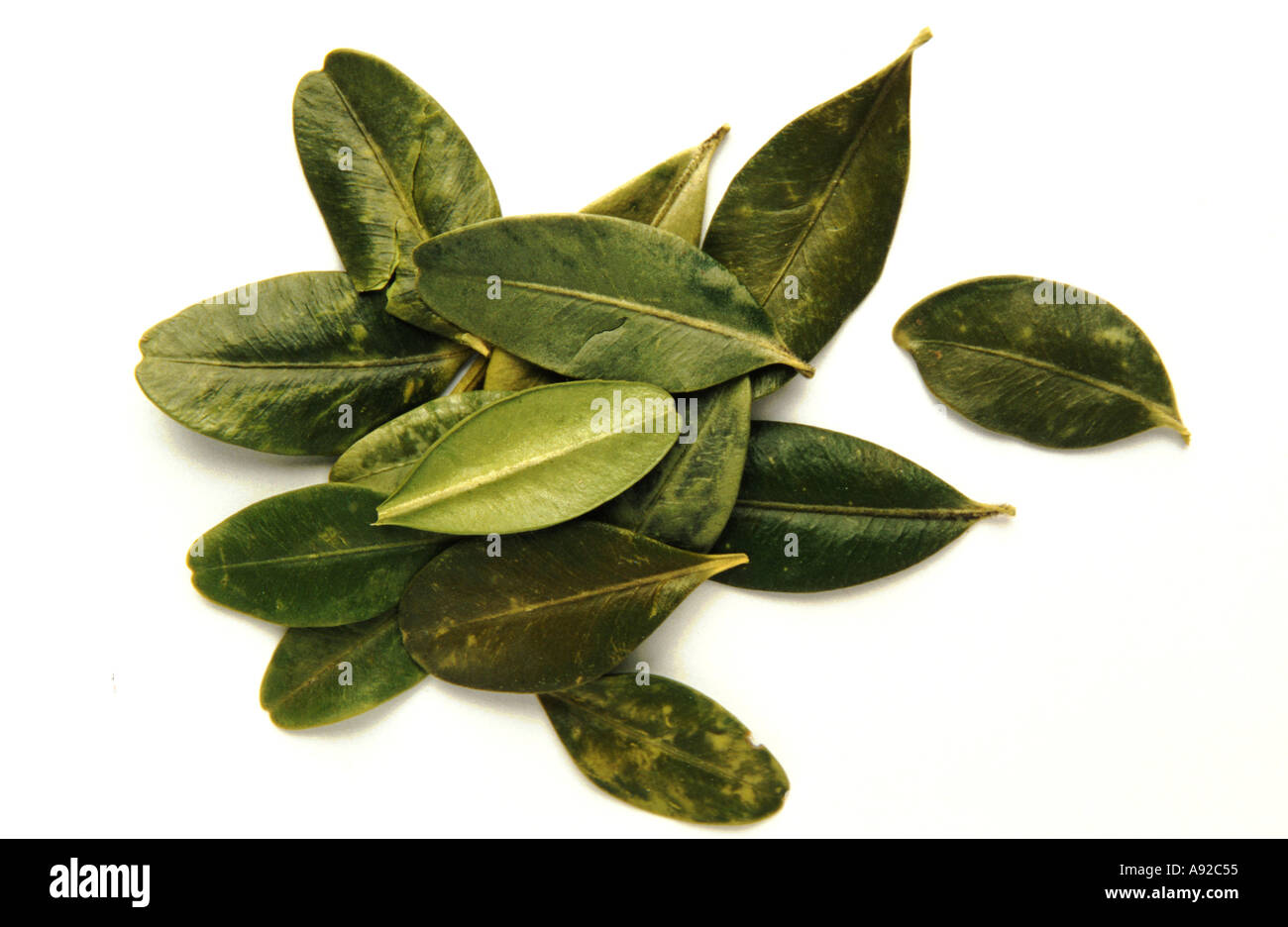Medicinal plant Box tree leaves Buxacea Buchsbaum

Image details
Contributor:
bildagentur-online.com/th-foto / Alamy Stock PhotoImage ID:
A92C55File size:
36.1 MB (961.6 KB Compressed download)Releases:
Model - no | Property - noDo I need a release?Dimensions:
4399 x 2865 px | 37.2 x 24.3 cm | 14.7 x 9.6 inches | 300dpiMore information:
Synonym Dudgeon Parts Used Wood and leaves Habitat Chiefly in limestone districts in western and southern Europe westward to the Himalayas and Japan northward to central and western France and in Britain in some parts of southern and central England Description Box in its familiar dwarfed state is merely a shrub but when left to grow naturally it will become a small tree 12 to 15 feet in height rarely exceeding 20 feet with a trunk about 6 inches in diameter covered with a rugged greyish bark that of the branches being yellowish It belongs to the family Buxacece a very small family of only six genera and about thirty species closely related to the Spurge family Euphorbiaceae Only this evergreen species has been utilized in medicine Its twigs are densely leafy and the leaves are about 1 2 inch in length ovate entire smooth thick coriaceous and dark green They have a peculiar rather disagreeable odour and a bitter and somewhat astringent taste The flowers are in heads a terminal female flower surrounded by a number of male flowers The fruit dehisces explosively the inner layer of the pericarp separating from the outer and shooting out the seed by folding into a U shape Constituents The leaves have been found to contain besides a small amount of tannin and unimportant constituents a butyraceous volatile oil and three alkaloids i Buxine the important constituent chiefly responsible for the bitter taste and now regarded as identical with the Berberine of Nectander bark ii Parabuxine iii Parabuxonidine which turns turmeric paper deep red The bark contains chlorophyll wax resin argotized tallow gum lignin sulphates of potassium and lime carbonates of lime and magnesia phosphates of lime iron and silica Top Medicinal Action and Uses The wood in its native countries is considered diaphoretic being given in decoction as an alterative for rheumatism and secondary syphilis Used as a substitute for guaiacum in the treatment of venereal disease when sudorifics are considered to